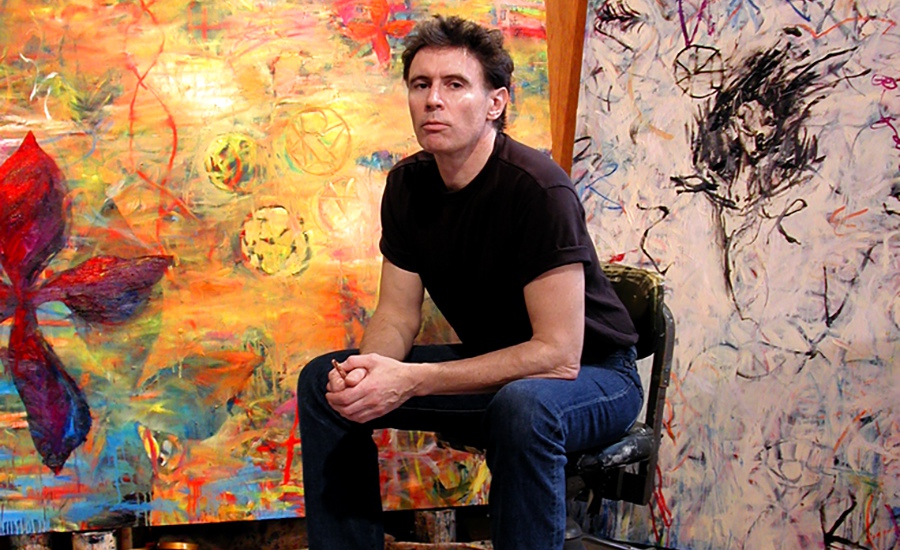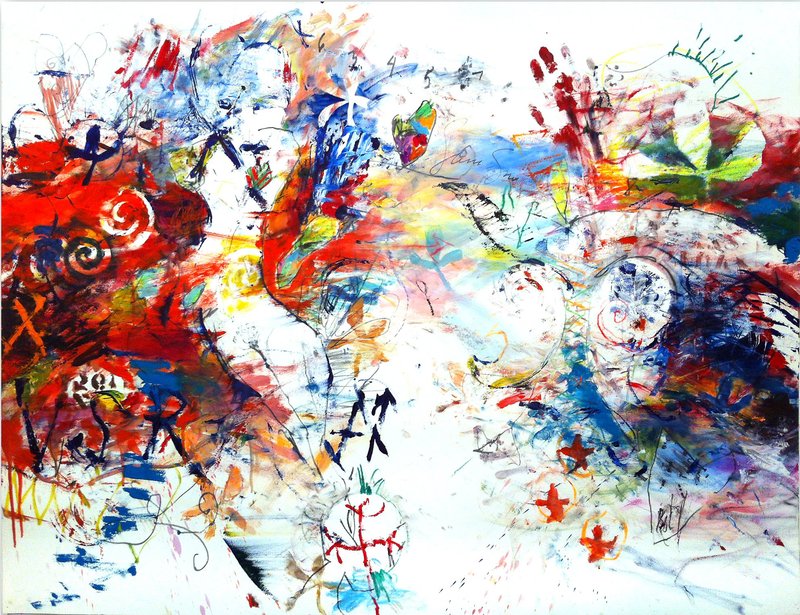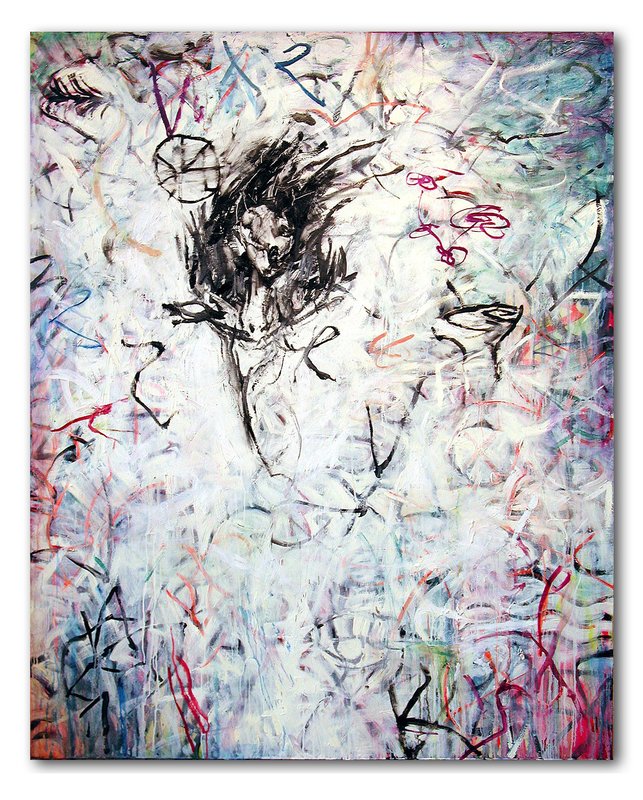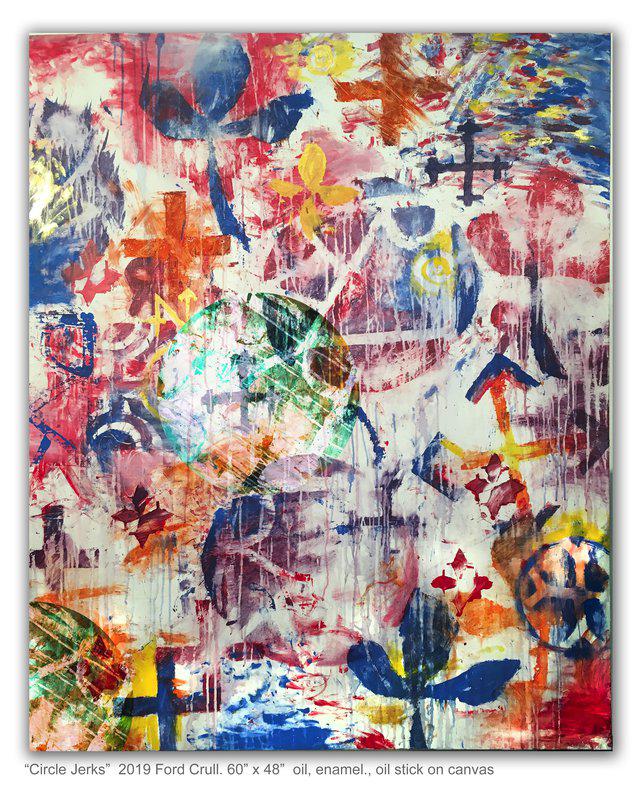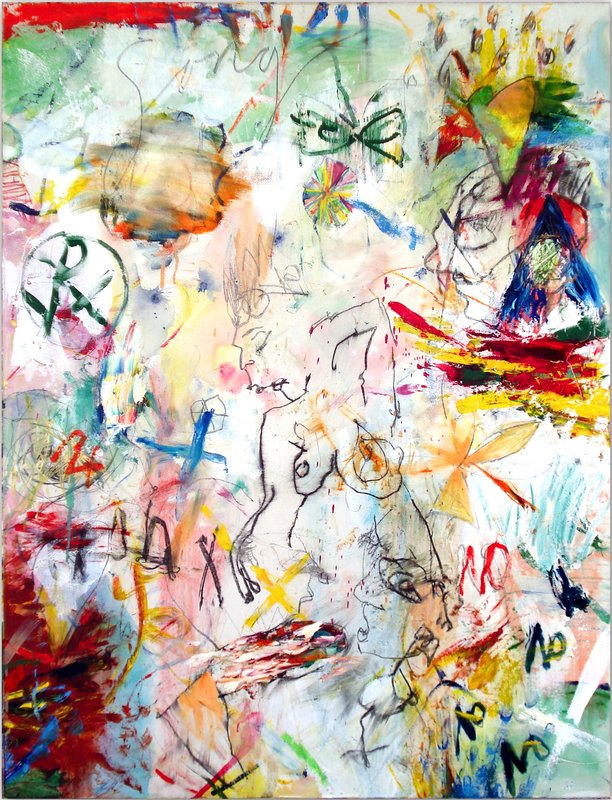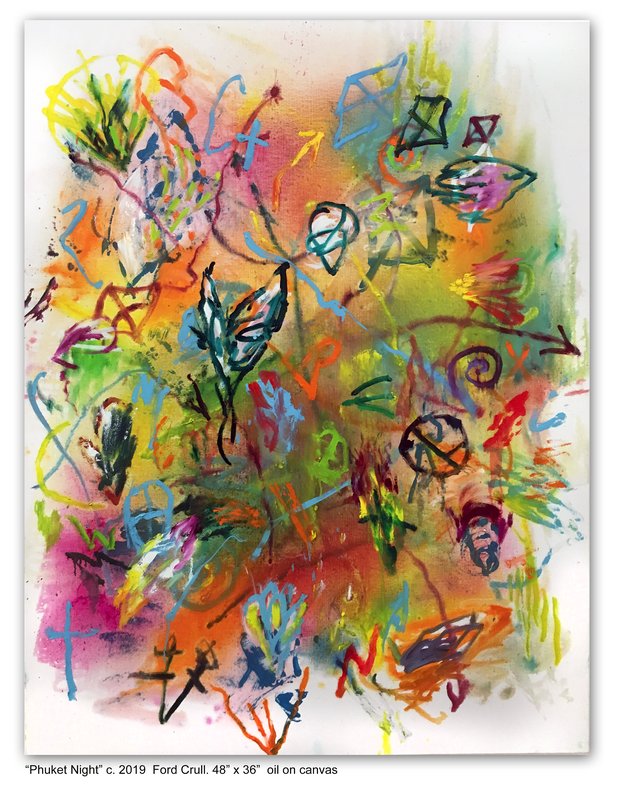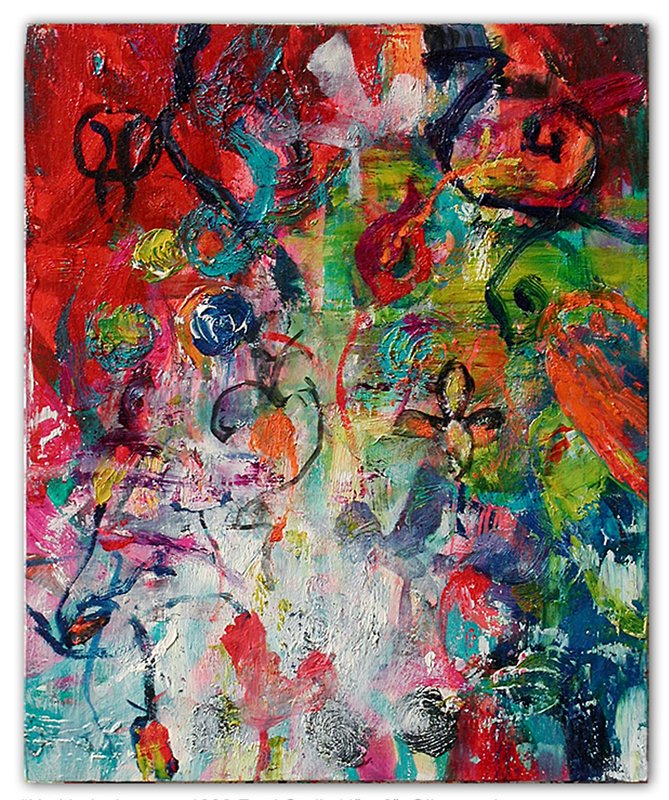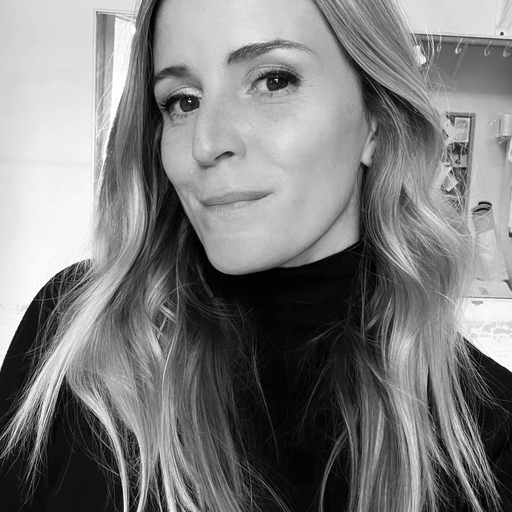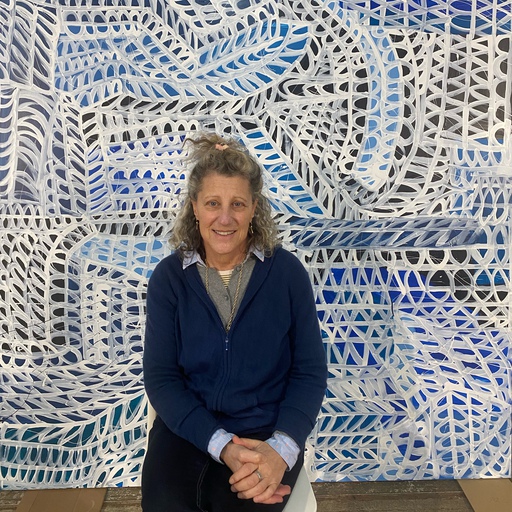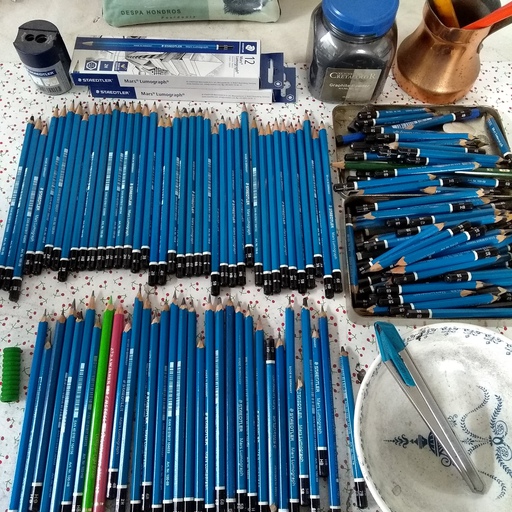Seattle-born, New York-based artist Ford Crull explores the expressive power of personal and cultural symbols in his densely painted, vividly-colored compositions.
Identifiable images such as hearts, wings, crosses, and the human figure, collide with geometrical emblems and abstract forms whose meanings are less explicit.
“I became bewitched with how symbols invade and influence what we believe and think about who we are," he tells Artspace.
Crull’s main influences are the Symbolists of the late 19th century: Odilon Redon, James Ensor, Gustave Moreau. “In terms of 20th-century art I feel an affinity with Paul Klee and Phillip Guston, along with Arshile Gorky,” he says.
Recent solo exhibitions of his work include shows at Carter Burden Gallery, New York, Abmeyer Wood Gallery, Seattle, Montgomery Museum of Fine Arts, Alabama, Bund1919, Shanghai, China, and Arte 92, Milan, Italy, among others.
We talked to the painter, one of the artists in our Artist Direct program, which offers art direct from the artist’s studio, about what makes painting so interesting to him, how everyone sees something different in his work based on personal experience, and why, for him, "the brush knows more than the mind."
How would you describe your work to someone who has never seen it?
I am interested in how Symbols unconsciously affect our lives. Symbols have an intrinsic power; a drama and mystery that fascinate me. I became bewitched with how symbols invade and influence what we believe and think about who we are.
What are the things current things going on that are inspiring you? There is so much information now that it is hard to form an individual experience, in terms of what is in our culture and how to define it. With AI, it becomes even harder, at least for me.
FORD CRULL - Some Lovers, 2014
How does your work fit together – is there a journey you can see?
Some paintings will just resonate with you, when the symbols and pictograms, and icons have this rich elegance, the piece works. It means that the symbols and icons we are subject to daily, vastly influence our lives in a way we are totally unconscious of. And that is what has importance for me.
Where do you fit in, who do you think you belong alongside? I think my main influences are the Symbolists of the late 19th century. Odilon Redon, James Ensor, Gustave Moreau. In the 20th century I feel an affinity with Paul Klee and Phillip Guston, along with Arshile Gorky.
FORD CRULL - The Last Templar, 2017
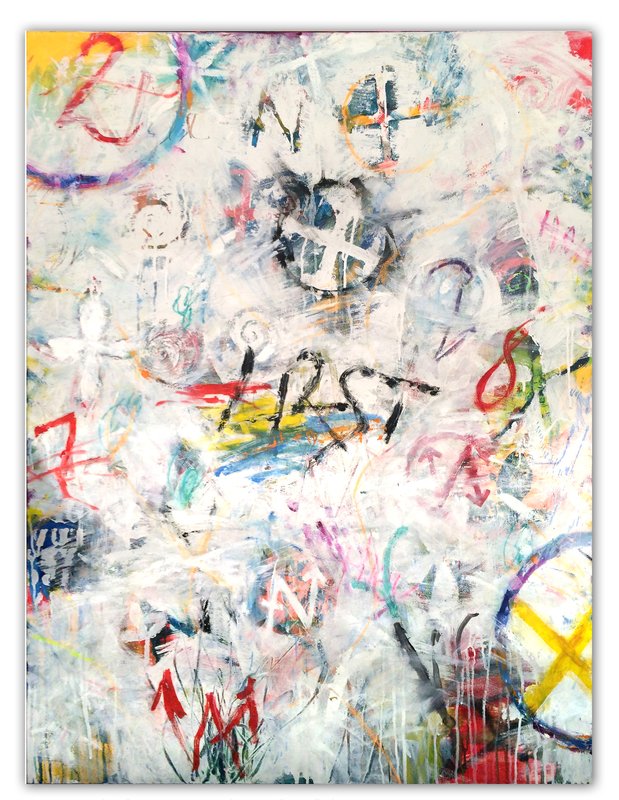
What do you think about when you’re creating?
I try not to think too much. You can disrupt the way the painting is naturally unfolding. The brush knows more than your mind. The creative process is an innate sensibility one has to trust. I listen to jazz, but it is more of a background noise that keeps me from thinking too much.
Where do your titles come from? They just show up They pop into my head. A few years ago, Bob Dylan was asked about his esoteric lyrics when he was young, and he said the same thing. They just showed up: (I’m going to ride into Omaha on a horse out to the country club and golf course carrying a copy of the New York times blow their minds.) That's how I feel}
Can you control where the process takes you? No. It is never the same. Some. days it is when I wake up other times it is seriously late. I have no control over when I work. It is not a 9-5 job like it is for other artists. It happens when it happens.
What are the bits of being a fine artist you struggle with? Everything.
Can you tell us a little about three of your works on Artspace? They all follow my particular style.
What made you want to become an artist?
I couldn't help it. I think it is an obsessive-compulsive disorder. When I was a boy, I drew incessantly. I had sheets of paper roughly 10 by 15 inches, and I covered them with Civil War soldiers. Literally hundreds of them, each drawn with the same delicacy as if they were alive.
As I became older, I wondered what it was that had so intrigued me with these war scenarios. I became fascinated with the symbols, icons and pictograms that were behind these historic conflicts. They had a substance and meaning for me that far outweighed their prescribed meaning. A cross meant Christianity, but in the films of Sergei Eisenstein, there was a distinction between the Teutonic knights with their iron helmets invading the Russian orthodox warriors to the east.
A cross could mean many things, we bow down before a cross, but are repulsed by a swastika. Yet they are related. If you cut the corners of a circle with a cross bisecting it, an early Christian icon, it becomes a Sulfot cross and then a swastika. But once the Nazis got a hold of it, it became a symbol of the most profound evil.
What was your earliest art creation? I would say about eight when I produced a work that everybody thinks I just did recently.
FORD CRULL - Phuket Night, 2019
How has your work changed over the course of your career?
Follow my career and you will see. I always do something that for me is completely different than the last painting I did. What makes painting so interesting to me is that there are multiple realities, multiple interpretations possible. What gives the painting a life of its own is that everyone is seeing something different based on their own experience, that way, to the viewer, the painting has a continued life.
And that is what has importance for me. It determines and manifests in our lives and in my work an unconsciousness that I am not cognizant of in my normal day-to-day existence. This is where my art stems from. It is subtle but real and infects me like a disease. I try to find why and how these symbols and icons have such a powerful and meaningful reality in my life.
If I buy one of your works, what should I say to friends about it?
Some paintings will just resonate with you, when the symbols and pictograms, and icons have this rich elegance, the piece works. It means that the symbols and icons we are subject to daily, vastly influence our lives in a way we are totally unconscious of.
FORD CRULL - Untitled, Clover, 1999
Do you collect art yourself or something that you consider art?
I bought a Phillip Guston print and some work from emerging artists.
What are you working on at the moment? I work on several different paintings at the same time. They all have the same sensibility as to my own ideas about my work.
You can see more of Ford Crull's work on his artist page on Artspace .











